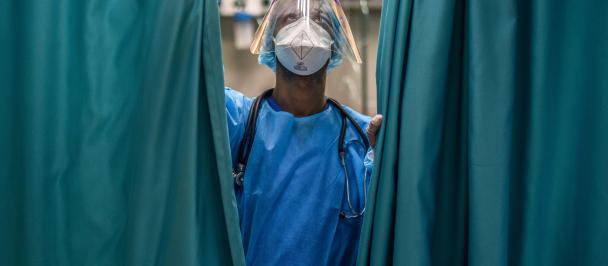Last week, world leaders met in New York to take steps towards ending the growing epidemic of tuberculosis (TB) and the increasing burden of non-communicable diseases (NCDs). A year from now, they will convene again to discuss the urgency of accelerating progress toward universal health coverage (UHC) — the idea that everyone should have access to essential health services at a cost they can afford regardless of where they live or who they are.
We have a long way to go to end TB, reduce the burden of NCDs and make UHC a reality. Declared a global emergency by the World Health Organization 25 years ago, TB infects more than 10 million new people every year and claims 4,500 lives every day. NCDs are the greatest source of premature death, disability and illness worldwide. And half the world’s people don’t have access to essential health services, and 8.6 million people die every year because of weak health systems that don’t get them the care they need.
New tools in the pipeline for TB and NCDs such as cancer hold great promise to accelerate progress on the Sustainable Development Goals. Yet for these innovations to deliver on their full potential and help the world take steps toward UHC, we must pay special attention to ensuring they reach the people who are being left behind, especially those being left the furthest behind.
Technology can help us identify, and ultimately close, gaps in access to life-saving innovations. UNDP is working with the Government of India, and other countries around the world, to roll out eVIN — an electronic vaccine intelligence network that provides frontline health workers and health system managers with real-time information on vaccine stocks in their districts. Tools like eVIN also give policymakers the information they need to see where weaknesses in the health system can be addressed, helping to drive the targeted reforms needed to close gaps in access and ensure no one is left behind.
Strong health systems are also essential to delivering health innovations to the people who need them. The UNDP-led Access and Delivery Partnership (ADP) supports countries to develop the capacities to deliver medicines, vaccines and diagnostics for TB and other diseases of poverty — helping to ensure that when lifesaving innovations are developed, they reach the people who need them the most. By supporting countries to strengthen health systems, initiatives like ADP help drive sustainable progress toward UHC.
In many cases, health innovations don’t reach the people who need them because of policies that restrict, rather than expand, access. For example, according to the World Health Organization, high costs and poor availability of cancer treatment are significant barriers to access in many low- and middle-income countries. Recognizing these challenges, UNDP is working with the Government of Japan, the Access and Delivery Partnership and the Global Health Innovative Technology Fund to build new global platforms that connect innovation with access and delivery in the years ahead. We are working to unite innovators, access platforms, implementers and donors from around the world to identify new strategies to expand access to lifesaving innovations and drive progress toward UHC.
With health issues like TB, NCDs and UHC higher on the political agenda than ever before, the world has a historic opportunity to make health, well-being and prosperity a reality for us all. Prioritizing equity as we scale up new health innovations can help to accelerate progress toward achieving the global goals, ensuring that we leave no one behind.

 Locations
Locations




